NYMPHAEON . . .
The village of Nymphaeon (formerly Nivesta or Neveska) is a mountainous settlement (altitude 1,350) that has been classified since 1978 as a "preserved traditional settlement". It belongs to the Municipality of Amyndeon of the Regional Unit of Florina. It is located at the southern end of the prefecture of Florina, on the eastern slopes of Mount Vernou, 57 km from the city of Florina via motorway 27 and the Xino Nero road.
Travel guides present it as one of the ten most beautiful villages in Europe, while in the U.N.E.S.C.O.'s global competition it claimed the International Melina Mercouri Award for the excellent management of cultural heritage and natural environment. The settlement has a permanent population of 132 inhabitants according to the 2011 census.
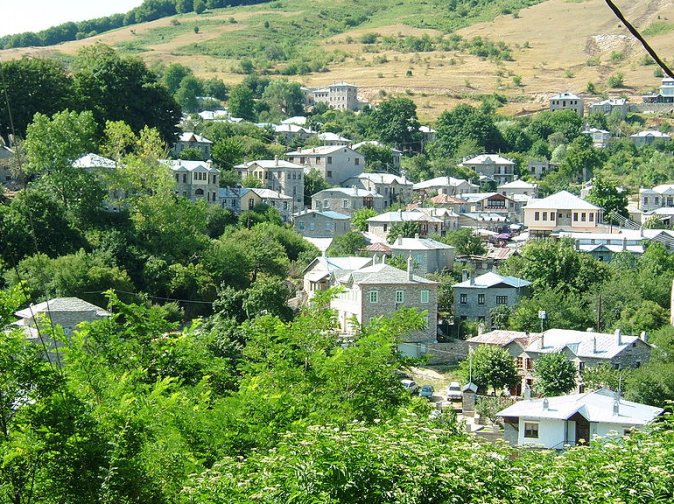 |
 |
Τhe name
The oldest name given by the first inhabitants of the village was Nivesta, a name of Vlach and previously Doric origin, with three interpretations: "Nivesta" because of the beauty of the village (Nivesta in Slavic languages) and the location; "unseen" (ni vista) probably because it was located in a place where it was not easily visible; and "snowy" or "where the snow stays" (nives sta).
The official name before liberation - and for a few years afterwards - was Neveska.
The settlement was renamed from Neveska to Nymphaion (and consequently the community of Neveski to the community of Nymphaion) by the Presidential Decree of 9/2/1926 "On the renaming of communities and settlements of Macedonia".
The use of the name Neveska is quite old and dates back to the Ottoman census of 1530, which refers to the village of Neveska of Kaza Florina.
History
Nymphaeon was settled around 1385 by Vlachs Odites, i.e. Latin-speaking indigenous Macedonians, who for 1,400 years guarded the neighbouring Egnatia Road and who fled to the inaccessible mountains after fierce battles with the Ottomans. These warlike settlers of Nymphaeus later capitulated under certain conditions. Thus they remained armed and self-governing, subordinate directly to the Valide Sultana, i.e. the Sultan's mother, to whom they paid much reduced taxes. Until the beginning of the 17th century, they lived mainly by raiding the plain's chiefdoms. Around 1630 they began to engage in silver mining and made their village a renowned centre of silversmithing in all of Macedonia for the remaining three centuries.
During the sweeping raids of the Albanians, at the end of the 18th century after Orlofika, Nymphaeon received many Vlachs Macedonian Greek refugees from Moschopolis, Nikolitsa, Linotopi and other places that were destroyed by the raiders. At the same time, a significant number of village residents moved to eastern Macedonia, to the villages of Ano Poroia, Kato Tzoumagia, Alistrati, Nigrita, Serres and elsewhere. During the Greek Revolution of 1821, the contribution of the inhabitants of Nymphaeum was significant, such as the family of Michas Tsirlis, who financed the struggle[10], Nakas, as well as the brothers Antonios and Vasilios Zourkos. In the Macedonian movement of 1878 against the Treaty of St. Stephen, a special figure of Nymphaeus emerged as the chieftain Vasilios Zourkas, who acted as far as the areas of Varnounta and Morihovo. During the Macedonian Struggle, the inhabitants took the lead in the Greek efforts, with the chieftain Dimitrios Golna as the main fighter. Nymphaeum produced important benefactors, among whom Michas Tzirlis stands out.
Today's Nymphaeon
The village is surrounded by a beech forest and is crossed by cobbled paths and stone-built houses. In recent years, with the contribution of important people from the village, such as its president Nikolaos Mertzos and the Boutaris family, it has become a pole of attraction for significant tourism.
The Arcturus organisation is active in the area with an environmental information centre for the brown bear and the wolf one and a half kilometres outside the village. These facilities are home to bears, which have been confiscated from bear hunters and zoos, and several wolves respectively - animals for which it is considered impossible to reintegrate them into the natural environment. The area has an equestrian club, the women's urban cooperative 'The Nymph', which produces and sells traditional products, five traditional guesthouses, restaurants and the community tourism development enterprise. In the village there is also the half-ruined headquarters of Pavlos Mela, while the old school is the Nikeios School, donated by Ioannis Jean Nikos (1875-1930), which did not operate for many years due to lack of students and is now a conference centre of the Aristotle University of Thessaloniki.
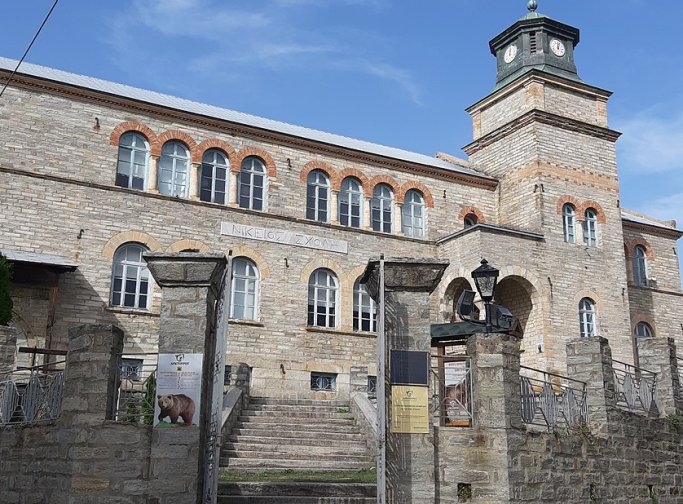 |
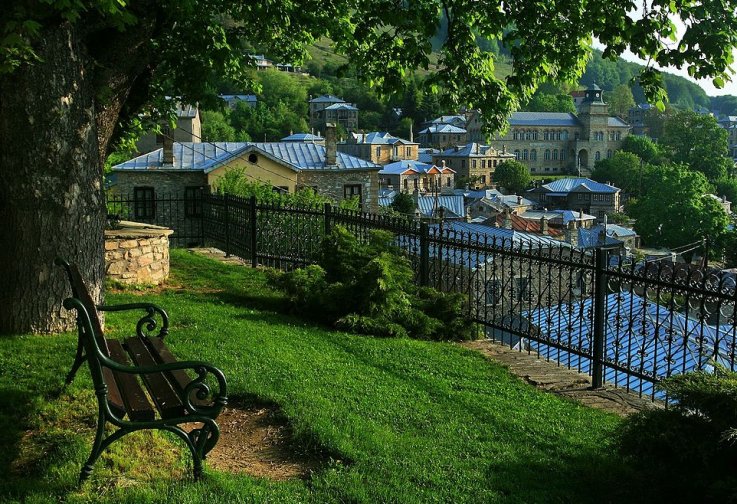 |
The Nikeios School View of today's Nymphaeon
 |
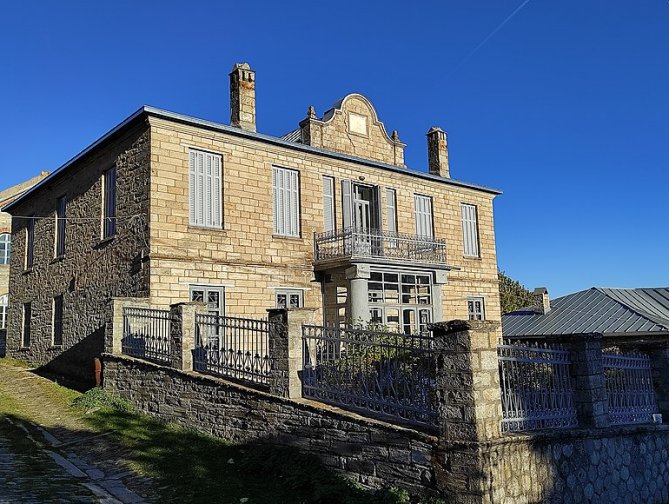 |
Mansion of I. Dodos (1928) Mansion of Cl. Missios (1920)
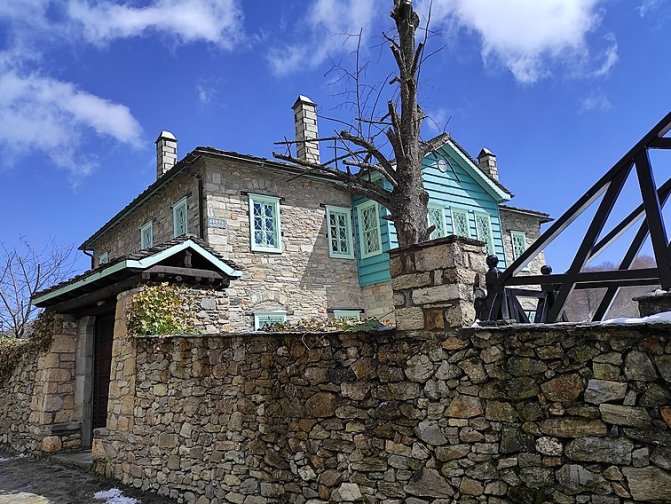 |
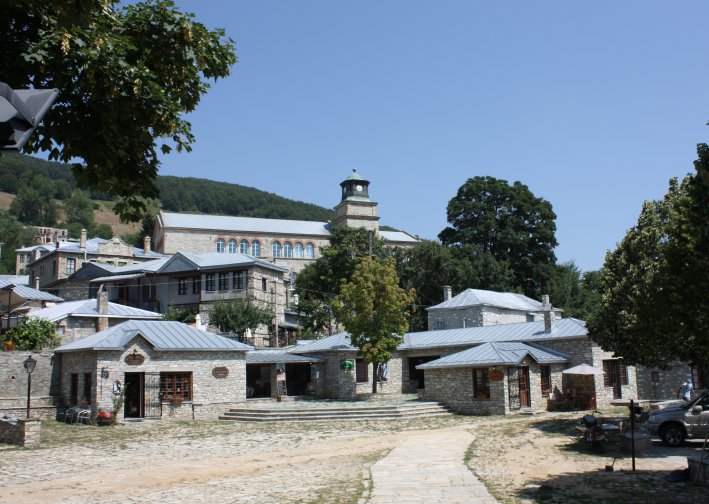 |
Mansion of Ioanni Sossidis (1873) View of the square